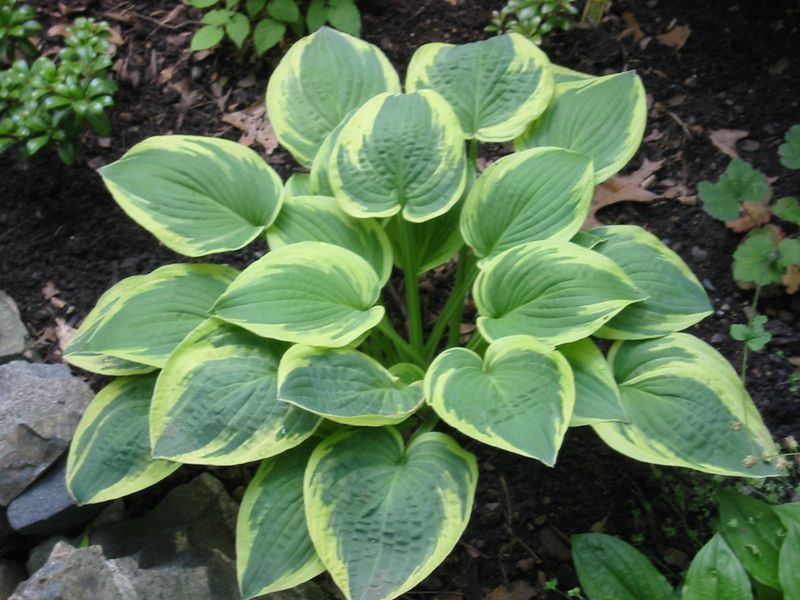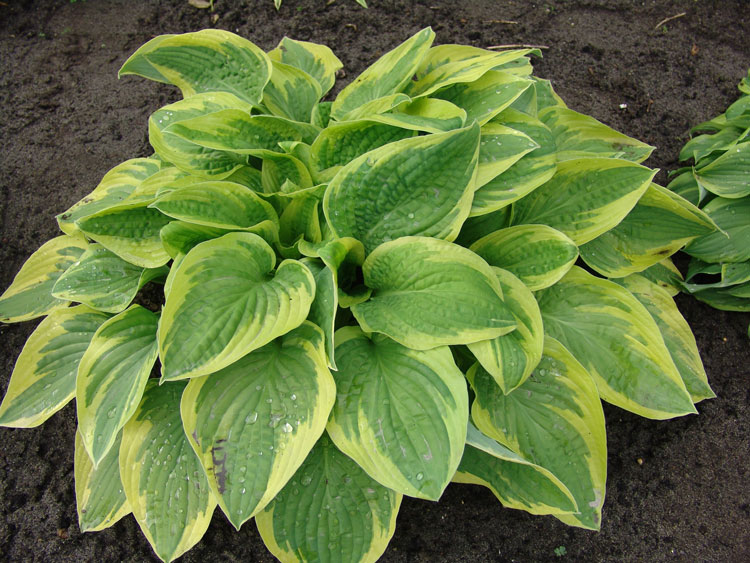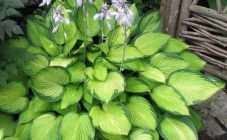Content:
Plants from the Khostovy genus are traditionally referred to the daylily family, but in the new classification they were singled out separately. They got their name in honor of T. Host, who was an Austrian doctor and botanist. The culture did not always wear such a name, often in the description you can find its other name - function (used from 1817 to 1905).
Different sources give not the same information about how many host species exist in nature, approximately this number is 20-40 species. Most of them come from China, Japan and Korea.
From the history of the species it is known that for the first time in Europe they began to study the host only in the 18th century. For this purpose, two varieties were specially brought from China - the bloated host and the plantain host. And already in 1829-1830. other varieties from Japan have also spread to different parts of the world. Since the host can have a variety of shapes and colors, initially each country came up with different names for them and it was not always possible to understand that they belong to the same family. That is, when a new variety was bred, a new specific name was attributed to it, and the old ones were trying to combine into one, which is why it is not clear how many varieties exactly exist and the translations of the names are not the same.
K. Hensen tried to understand the current situation, who in 1963 studied all the available materials on the host family and gave the most understandable description of their names and varieties. After his work, D. Granfal's book "Study of the genus Hosta and its presence in trade" was published. Then more and more monographs appeared with a complete description of the culture, but the opinions of the researchers did not coincide on all issues. Nevertheless, now there is a lot of information that allows you to find out everything you need to know if you want to plant this plant on your site. For example, a variety such as the Wide brim host, which is worth talking about in more detail, will perfectly complement any flower garden.
Hosta Wide Brim: description and characteristics of the variety
The Wide Brim hybrid host appeared in 1979, thanks to the efforts of the Aden company, which produces new varieties of crops. The variety is decorative-deciduous, has a dome-shaped shape. Its leaves are embossed, light green in color with a white border. Forms a falling rosette, which is capable of gaining a height of up to 50 cm. As for the description of the flowers, they are lavender in color, have a delicate pleasant aroma, and, as a rule, gather in racemose inflorescences, often one-sided. The peduncle grows on a high stalk. The flowering period is July-August.
Khosta Wide Brim, according to the description of moisture content, is characterized by an increased requirement for the moisture content in the soil. She especially needs a lot of water at the time of flower formation. Also, the more moist the soil, the larger the plant will expel the leaves. It is necessary to constantly monitor that the land around this culture does not dry out, but it cannot be flooded either.
Hosta Wide Brim: a description of planting and leaving
The variety hosts White Brim are planted in groups. Each of them should be small and include from 3 to 8 pieces. Many growers note that the best density for planting this plant is 3-5 pcs per 1 sq m.Before planting, the soil is carefully prepared, removing all weeds, and then fertilizing.As it grows and in the future, the plant reacts well to various mineral and organic fertilizers.
When caring for a crop, it is important to know that it needs pruning. It is held in the fall. She also needs to divide the bush, but not more often than after 4-5 years.
Advantages and disadvantages of the variety
Undoubtedly, the advantages of the Wide Brim hosts are:
- good adaptability to different lighting conditions. In addition, the more sunlight she receives, the lighter her leaves will be, and vice versa, the more darkened her planting site, the darker they will be;
- the plant has very expressive and original forms of leaves and flowers, which makes it a favorite of landscape designers.
The disadvantage of Wide Brim culture is that it is susceptible to pests in dry weather. Spider mites and aphids love to attack it in the heat. Because of this, it is necessary to constantly check the condition of the flower in order to react in time to the appearance of parasites. In addition, it is recommended to prophylactically treat the variety against powdery mildew and leaf spot.
This plant is pretty cute, so gardeners love to dilute their flower gardens with these green bushes. It gives some originality to the garden due to the color of its leaves.















